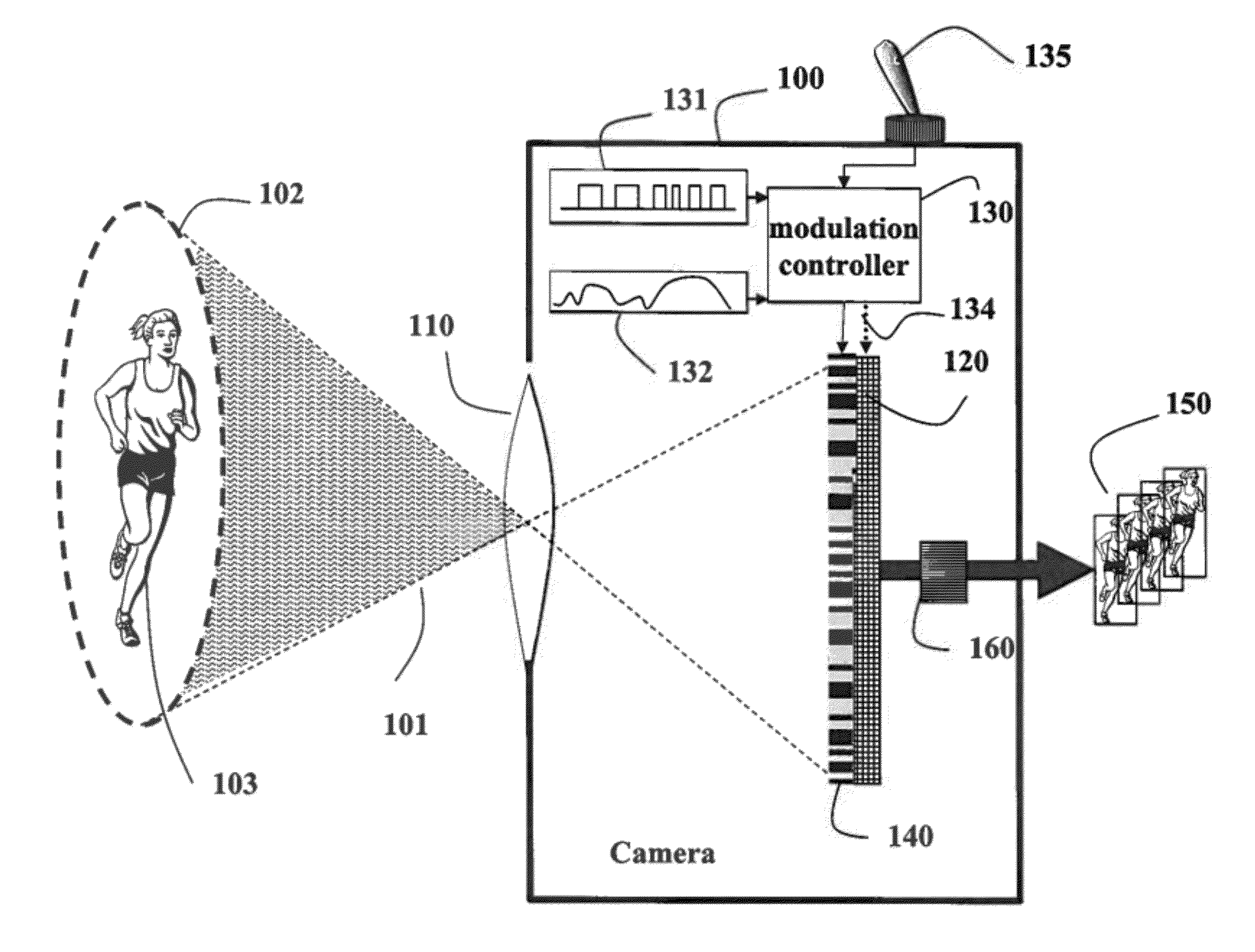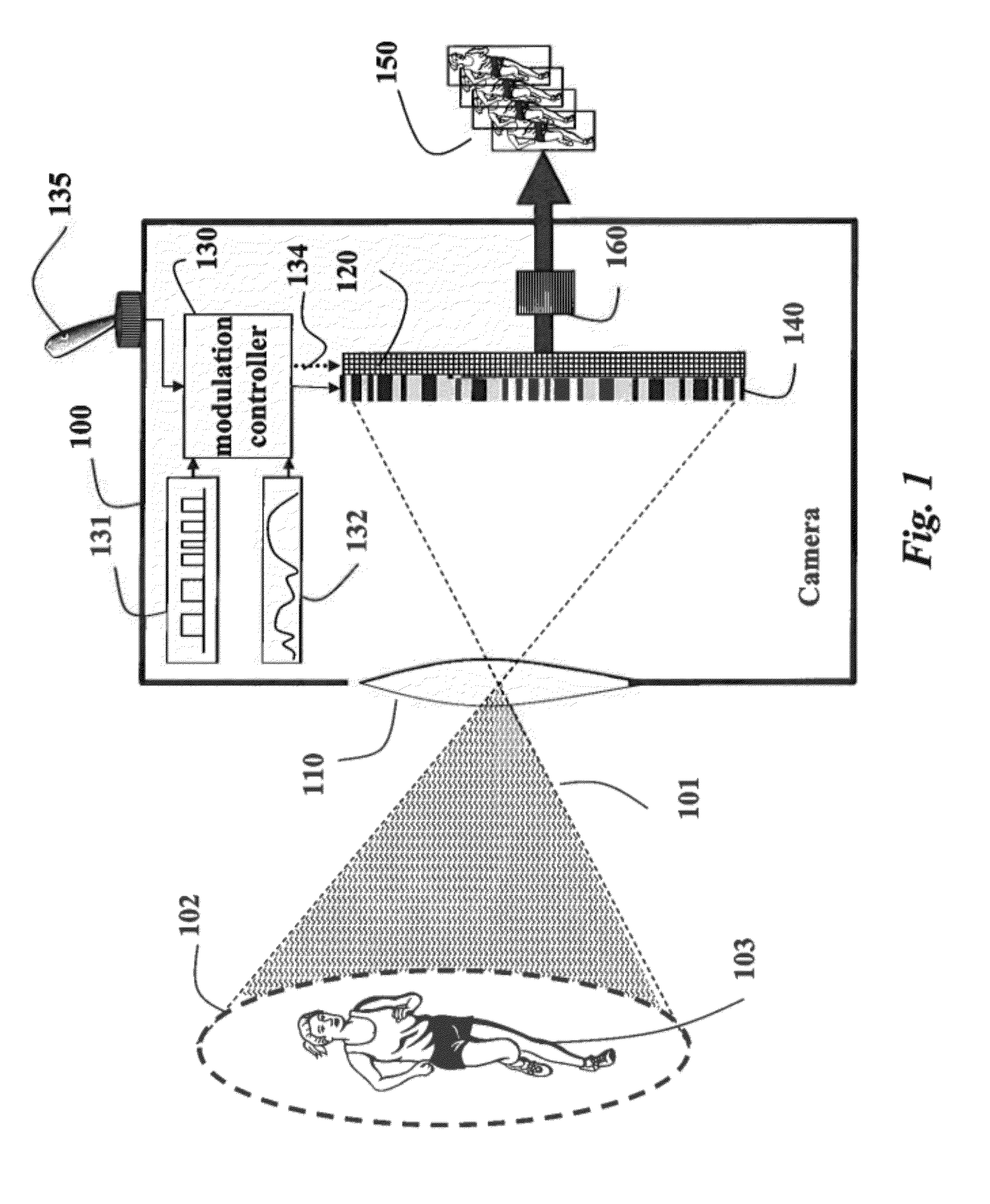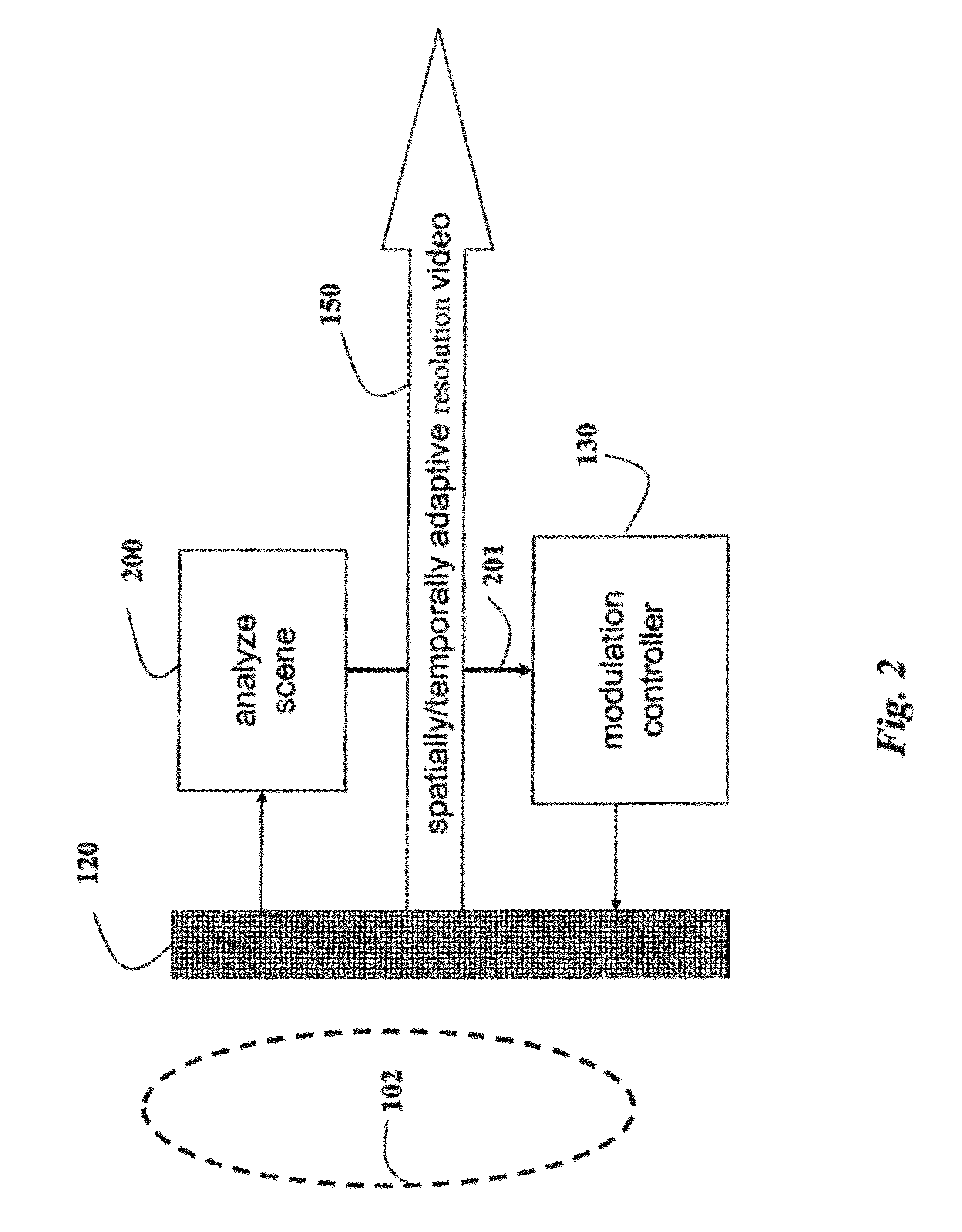Video camera for reconstructing varying spatio-temporal resolution videos
a spatio-temporal resolution, video camera technology, applied in the field of video cameras and video processing, can solve the problems of limiting the time resolution of most conventional video cameras, challenging high-speed video cameras, and fundamental limits of those methods
- Summary
- Abstract
- Description
- Claims
- Application Information
AI Technical Summary
Benefits of technology
Problems solved by technology
Method used
Image
Examples
Embodiment Construction
[0024]Programmable Pixel Compressive Video
[0025]FIG. 1 is simplified schematics of a programmable pixel compressive video camera 100 according to embodiments of our invention. The camera is configured to acquire a sequence of frames of a scene as a video. The camera includes a lens 110, a sensor 120, a modulation controller 130, and a spatio-temporal mask 140.
[0026]In the preferred embodiment, the camera is a digital video camera, and the sensor includes an array of sensor pixels, e.g., 0.25 megapixel. The sensor can include red, green and blue (RGB) pixels interleaved in a Bayer filter mosaic, i.e., a color filter array (CFA), where the color pattern is GRGB). The camera acquires a sequence of low temporal resolution frames 150 at 30 frames per second (fps), which is the natural frame rate of the camera.
[0027]Mask
[0028]The mask includes an array of mask pixels, e.g., 1 megapixel. In other words, a spatial resolution (mask pixel resolution) of the mask is substantially greater than ...
PUM
 Login to View More
Login to View More Abstract
Description
Claims
Application Information
 Login to View More
Login to View More - R&D
- Intellectual Property
- Life Sciences
- Materials
- Tech Scout
- Unparalleled Data Quality
- Higher Quality Content
- 60% Fewer Hallucinations
Browse by: Latest US Patents, China's latest patents, Technical Efficacy Thesaurus, Application Domain, Technology Topic, Popular Technical Reports.
© 2025 PatSnap. All rights reserved.Legal|Privacy policy|Modern Slavery Act Transparency Statement|Sitemap|About US| Contact US: help@patsnap.com



